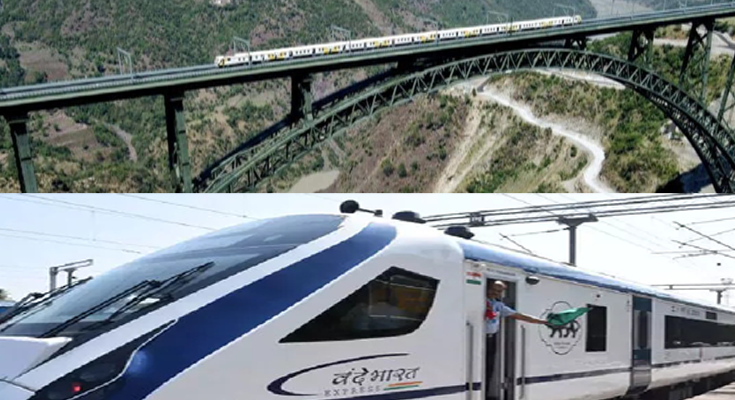 Kudos to Prime Minister Narendra Modi for flagging off the first-ever direct train to Kashmir—an initiative many believe will be a turning point for the region’s travel, tourism, and economy. The Vande Bharat Express is not just a marvel of modern engineering; it is a triumph of India’s ‘Make in India’ initiative and a symbol of inclusive development.
Kudos to Prime Minister Narendra Modi for flagging off the first-ever direct train to Kashmir—an initiative many believe will be a turning point for the region’s travel, tourism, and economy. The Vande Bharat Express is not just a marvel of modern engineering; it is a triumph of India’s ‘Make in India’ initiative and a symbol of inclusive development.
Travel to Kashmir has always been a dream for countless people. Known for its breathtaking landscapes, snow-covered mountains, and serene valleys, the region has consistently ranked among India’s top tourist destinations. However, road travel to Kashmir has long been challenging, marked by discomfort and unpredictability. Now, the Vande Bharat Express promises a comfortable, fast, and affordable journey, making access to the Valley easier than ever before.
Over the past 11 years, the government has taken consistent, focused steps to strengthen railway infrastructure across Jammu and Kashmir. The Kashmir Valley holds a special place in every traveler’s heart, and its tourism industry has been a vital pillar of the local economy. With improved connectivity, the region is poised for a revival.
The recently launched Vande Bharat Express between Katra and Srinagar has been widely praised. Passengers have described the service as offering “unmatched convenience,” calling it a “great move by the government” that makes travel not only possible but also comfortable and reliable. Vande Bharat trains are designed for speed, comfort, and efficiency—but the Kashmir edition adds a fourth hallmark: resilience. Built to withstand extreme weather and rugged terrain, this train exemplifies Indian innovation rising to meet unique challenges.
What makes this development even more significant is its potential to revitalize Kashmir’s tourism industry. By drastically reducing travel time and offering an affordable alternative to road or air travel, the Vande Bharat Express opens the valley to visitors from across India. The government has reshaped the railway landscape of Jammu and Kashmir with strategic vision and unwavering resolve.
Earlier in the day, in another historic milestone, Prime Minister Modi also dedicated to the nation the iconic Chenab Bridge—the world’s highest railway bridge—connecting the remote villages of Bakkal and Kauri in Reasi district. With this, Kashmir is now fully integrated into India’s railway network.
The new train service will significantly boost both tourism and economic activity in Kashmir by offering locals and tourists a smoother, faster, and safer journey. It not only connects Jammu to Kashmir via a reliable rail link but also links the Valley to the rest of the country for the first time through such a modern and efficient mode of transport.
This development comes at a crucial time, especially after the setback to the tourism industry following the tragic Pahalgam terror attack. The Vande Bharat Express now stands as a beacon of hope, signaling a new beginning for Kashmir’s economic and social revival.
Designed specifically for the harsh climate and terrain of the region, this winter-hardened version of the Vande Bharat Express is packed with innovative features. Compared to the 136 Vande Bharat trains operating elsewhere in the country, this one includes advanced upgrades to address the operational challenges and passenger needs unique to Jammu and Kashmir.
More than just a transport service, the Vande Bharat Express symbolizes a return to normalcy and progress after years of challenges. It strengthens Kashmir’s connection to the national mainstream—bridging not just geographical but also emotional and economic distances.
With complete electrification, upgraded stations, and consistent budgetary support, India’s commitment to integrating Kashmir with the rest of the country is now a visible reality. There is no doubt that this initiative will play a critical role in reviving the tourism sector and strengthening the local economy, paving the way for a brighter, more connected future.




